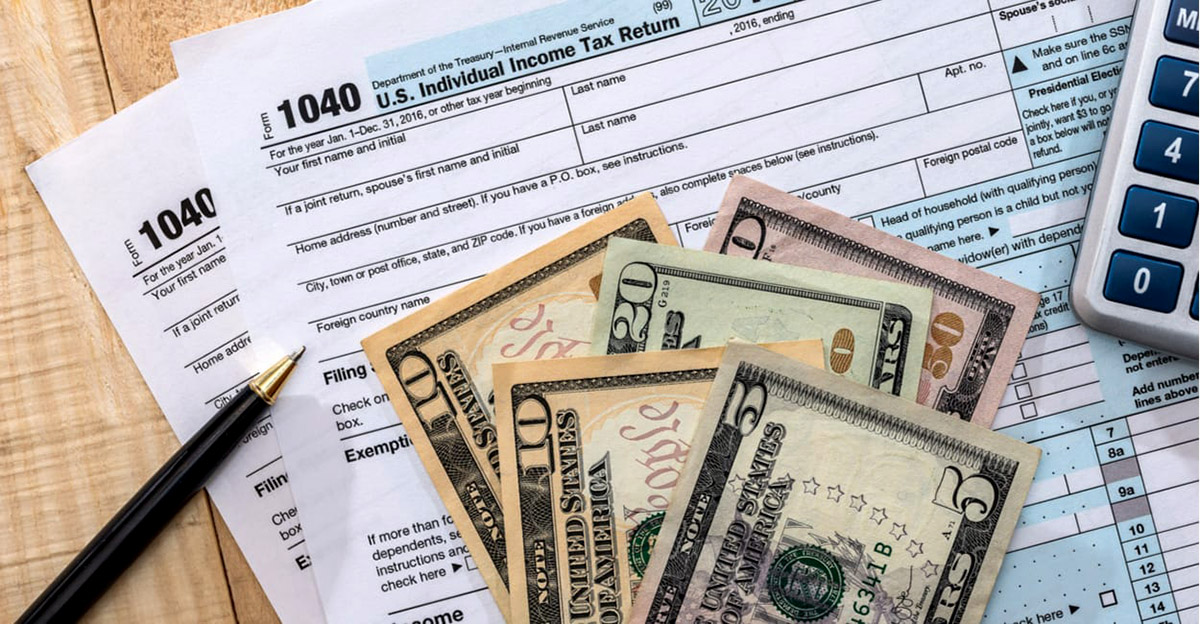

Finance
How Much Pension Do Postal Workers Get
Published: November 27, 2023
Find out how much pension postal workers receive and plan your finances accordingly. Learn about the retirement benefits and financial security they enjoy.
(Many of the links in this article redirect to a specific reviewed product. Your purchase of these products through affiliate links helps to generate commission for LiveWell, at no extra cost. Learn more)
Table of Contents
- Introduction
- Overview of Postal Workers’ Pension
- Calculation of Postal Workers’ Pension
- Factors Influencing Postal Workers’ Pension
- Comparison of Postal Workers’ Pension with Other Professions
- Challenges and Concerns regarding Postal Workers’ Pension
- Proposed Solutions and Reforms for Postal Workers’ Pension
- Conclusion
Introduction
Welcome to our comprehensive guide on the pension benefits received by postal workers. In this article, we will explore the various aspects of postal workers’ pensions, including how they are calculated, the factors that influence the pension amount, and how it compares to pensions in other professions.
The postal service is an essential and extensive part of our daily lives, responsible for delivering mail and packages to millions of people across the country. Postal workers play a crucial role in ensuring that our mail reaches us on time and in good condition. As a result of their dedicated service, postal workers are entitled to a pension upon retirement.
A pension is a retirement benefit that provides financial security to workers after they leave their employment. It is designed to replace a portion of the workers’ income during their retirement years, allowing them to maintain a certain standard of living even when they are no longer working.
Postal workers, like employees in many other industries, contribute a portion of their earnings towards their pension throughout their years of service. These contributions, along with other factors, determine the amount of pension benefits they will receive in retirement.
Understanding how postal workers’ pensions are calculated is important not only for postal workers themselves but also for anyone interested in the financial aspects of this profession. It enables individuals to make informed decisions about retirement planning and underscores the importance of saving for the future.
In the following sections, we will delve into the specifics of postal workers’ pensions, exploring how they are calculated, the factors that influence the pension amount, how it compares to other professions, and the challenges and concerns surrounding these pensions. We will also examine proposed solutions and reforms that aim to improve the pension benefits for postal workers.
So, let’s dive into the fascinating world of postal workers’ pensions and uncover the intricate details of this crucial retirement benefit.
Overview of Postal Workers’ Pension
Postal workers’ pensions are a vital component of the retirement benefits provided to employees in the postal service industry. These pensions offer financial security and stability for postal workers during their retirement years.
The primary purpose of a postal worker’s pension is to replace a portion of their pre-retirement income once they have stopped working. This allows them to maintain their standard of living and meet their financial obligations even when they are no longer actively employed.
The pension benefits for postal workers are typically structured as a defined benefit plan. This means that the pension amount is predetermined based on a formula that takes into account various factors such as age, years of service, and average salary.
Under the defined benefit plan, postal workers contribute a portion of their earnings towards their pension throughout their working years. These contributions, along with contributions from the employer, are invested to generate returns that fund the pension benefits.
Upon reaching retirement age, postal workers become eligible to receive their pension benefits. The pension amount is typically calculated based on a combination of factors, including the number of years worked, the average salary earned during the highest earning years, and a multiplier.
The multiplier is a percentage determined by the pension plan and is used to calculate the pension benefit. For example, if the multiplier is 1.5% and a postal worker has worked for 30 years with an average salary of $50,000, their annual pension benefit would be $22,500 (30 years x $50,000 x 1.5%).
Postal workers may also have the option to receive their pension benefits in different payment forms. They can choose to receive a monthly payment for the rest of their lives, receive a lump sum, or opt for a combination of both.
It is important to note that pension benefits may be subject to taxes, and the exact tax treatment can vary depending on the jurisdiction and individual circumstances. Postal workers should consult with a financial advisor or tax professional to understand the tax implications of their pension benefits.
Overall, postal workers’ pensions provide a crucial safety net for individuals who have dedicated their careers to serving the postal service industry. These pensions ensure that they can enjoy a comfortable retirement and have the financial resources needed to fulfill their needs and aspirations in their post-work years.
Calculation of Postal Workers’ Pension
The calculation of postal workers’ pensions is based on various factors, including age, years of service, average salary, and a multiplier. Understanding these factors can help postal workers estimate their future pension benefits and plan for a secure retirement.
One of the key factors in determining the pension amount is the number of years of credited service. In general, the more years a postal worker has worked, the higher their pension. Each year of service contributes to the overall pension calculation, with a specific percentage or fraction assigned to each year.
The average salary is another crucial component in the pension calculation. Typically, the pension benefit is based on the highest earning years of a postal worker’s career. This is often determined by averaging the salaries earned during the highest consecutive years of employment.
A multiplier is then applied to the years of service and average salary to calculate the actual pension benefit. The multiplier represents a percentage of the average salary for each year of service. For example, if the multiplier is 1.5% and a postal worker has 20 years of service with an average salary of $60,000, their annual pension benefit would be $18,000 (20 years x $60,000 x 1.5%).
It is important to note that the specific multiplier used for pension calculations can vary depending on the pension plan in place. Different plans may have different formulas for determining the multiplier, so it is essential for postal workers to review their plan documents or consult with their human resources department to understand the specific calculation method.
Additionally, postal workers may have the option to enhance their pension benefits through voluntary contributions or by participating in additional retirement savings plans such as a 401(k) or an Individual Retirement Account (IRA). These additional contributions can help boost the overall pension benefit and provide a more substantial retirement income.
Furthermore, pension benefits may be subject to certain restrictions or limitations. Some plans may have a minimum number of years of service requirement before a postal worker becomes eligible for a full pension. There may also be a maximum limit on the pension benefit, ensuring that it does not exceed a certain percentage of the average salary or a specified dollar amount.
Understanding the calculations involved in postal workers’ pensions is crucial for effectively planning for retirement. Postal workers should review their pension plan documents, consult with their human resources department, or seek professional financial advice to obtain accurate and personalized information regarding their specific pension benefits.
Factors Influencing Postal Workers’ Pension
Several factors play a significant role in determining the pension benefits received by postal workers. These factors can influence the overall pension amount and should be considered when planning for retirement. Let’s take a closer look at some of the key factors that can impact postal workers’ pensions:
1. Years of Service: The number of years a postal worker has worked in the postal service is a significant determinant of their pension. Generally, the longer the tenure, the higher the pension benefits. Each year of credited service contributes to the overall pension calculation and increases the final pension amount.
2. Average Salary: The average salary earned by a postal worker during their highest earning years is another crucial factor influencing pension benefits. Higher average salaries result in larger pension amounts, as the pension is typically calculated based on a percentage of the average salary earned during a specified period, such as the highest consecutive years of employment.
3. Retirement Age: The age at which a postal worker chooses to retire can also impact their pension benefits. In some pension plans, early retirement may result in a reduction of the pension amount, while retiring at the full retirement age may provide higher benefits.
4. Pension Plan Formula: The specific formula used by the pension plan to calculate benefits can vary. The formula considers factors such as years of service, average salary, and a multiplier. Understanding how these elements are weighted in the formula is important to estimate the pension amount accurately.
5. Cost of Living Adjustments: Some pension plans offer cost of living adjustments (COLAs) to account for inflation and help maintain the purchasing power of pension benefits over time. These adjustments can provide annual increases to the pension amount, ensuring that it keeps up with the rising cost of living.
6. Voluntary Contributions: Postal workers may have the option to make voluntary contributions to enhance their pension benefits. These additional contributions can increase the overall pension amount received at retirement, providing a higher income during the retirement years.
7. Other Retirement Savings: In addition to the pension plan, postal workers may participate in other retirement savings vehicles, such as a 401(k) or an Individual Retirement Account (IRA). The savings accumulated in these accounts can supplement the pension benefits and provide additional income during retirement.
It is important for postal workers to be aware of these factors and how they interact to determine their pension benefits. By understanding the variables involved, postal workers can make informed decisions about their retirement planning and take steps to optimize their pension benefits.
Postal workers should consult their pension plan documents, speak with their human resources department, or seek professional financial advice to fully understand how these factors impact their specific pension benefits.
Comparison of Postal Workers’ Pension with Other Professions
When considering retirement planning, it is natural to compare pensions across different professions. Understanding how the pension benefits of postal workers compare to those of other professions can provide valuable insights into the attractiveness and competitiveness of these pensions. Let’s explore a comparison of postal workers’ pensions with pensions in other professions:
1. Government Employees: Postal workers are classified as federal government employees, and their pension benefits are often similar to those of other government workers. Government employees, including postal workers, are typically eligible for defined benefit pensions that provide a guaranteed income during retirement. However, specific details and benefits can vary between government agencies and departments.
2. Private Sector Employees: In comparison to the private sector, postal workers generally have more favorable pension benefits. While many private sector companies have transitioned away from traditional defined benefit pension plans, postal workers still enjoy the security of such plans. Private sector employees often rely on defined contribution plans, such as 401(k) accounts, which may not provide as steady and guaranteed income in retirement.
3. Unionized Employees: Postal workers who are members of labor unions often have stronger pension benefits compared to non-unionized counterparts. Labor unions negotiate collective bargaining agreements that include better pension provisions, extending higher pension amounts, better cost of living adjustments, and improved retirement benefits.
4. Self-employed and Small Business Owners: Self-employed individuals and small business owners typically do not have access to traditional pension plans. Instead, they are responsible for setting up and funding their retirement accounts, such as SEP-IRA or individual 401(k) plans. While these retirement savings options provide flexibility and control, they may not offer the same level of financial security as postal workers’ pensions.
It is important to note that comparing pensions across professions may not provide the complete picture of retirement benefits. Other factors, such as salary levels, job satisfaction, and career stability, should also be considered when evaluating the overall attractiveness of various professions.
While postal workers’ pensions may offer advantageous benefits compared to certain professions, it is essential for postal workers to review their specific pension plan details, including eligibility requirements, vesting periods, and retirement age, for a comprehensive understanding of their retirement benefits.
Postal workers may also benefit from seeking professional financial advice to assess their overall retirement readiness and consider additional retirement savings options beyond their pension plan to ensure a secure financial future.
Challenges and Concerns regarding Postal Workers’ Pension
While postal workers’ pensions provide valuable retirement benefits, there are several challenges and concerns that exist within the system. These issues can impact the overall sustainability and adequacy of postal workers’ pensions, and it is important to be aware of them. Let’s explore some of the main challenges and concerns regarding postal workers’ pensions:
1. Funding Shortfalls: One of the key challenges faced by postal worker pensions is the funding shortfall. Due to various factors, including demographic changes and lower investment returns, some pension plans may not have sufficient funds to meet their long-term obligations. This can lead to potential reductions in pension benefits or the need for increased contributions from both the workers and the employer to address the funding gap.
2. Pension Reform: As the financial landscape evolves and pension liabilities grow, there is a growing need for pension reform. Revisions in pension plan structures, eligibility criteria, and contribution levels may be necessary to ensure the long-term sustainability of pension benefits for postal workers. However, implementing reforms can be challenging, and finding a balance between maintaining benefits and addressing funding issues is a complex task.
3. Shifting Demographics: The aging population and increasing life expectancy pose challenges to pension systems. With people living longer, pension plans need to provide benefits for a more extended period, which can strain the financial resources of the pension fund. This challenge requires careful management to ensure that pension benefits remain adequate and sustainable for the longevity of retirees.
4. Economic Uncertainty: Economic fluctuations and recessions can impact the financial health of pension funds. A downturn in the economy can lead to lower investment returns, putting pressure on the funding of pension benefits. Uncertain economic conditions and market volatility can pose challenges to maintaining stable and reliable pension payments for postal workers.
5. Cost of Living Adjustments (COLAs): While cost of living adjustments can help pension benefits keep pace with inflation, not all pension plans offer these adjustments. Without COLAs, pension payments can lose their purchasing power over time, leading to a potential decline in the standard of living for retirees. Ensuring adequate COLAs or implementing alternative mechanisms to protect against inflation is crucial to address this concern.
6. Legal and Legislative Changes: Changes in laws and regulations regarding pension plans can impact the benefits received by postal workers. Amendments to pension legislation or court rulings can alter benefit formulas, retirement ages, or eligibility requirements, affecting the pension amounts received by postal workers. Keeping up-to-date with legal developments is vital to understanding the potential impact on pension benefits.
Addressing these challenges and concerns requires a multi-faceted approach that involves careful management, proactive pension reforms, and collaboration between postal workers, employers, and relevant stakeholders. By effectively navigating these issues, postal workers can sustain and enhance their pension benefits, ensuring a secure retirement for themselves and their families.
Proposed Solutions and Reforms for Postal Workers’ Pension
As the challenges and concerns surrounding postal workers’ pensions continue to be addressed, several proposed solutions and reforms have been put forward to strengthen the pension system and maintain the financial security of postal workers during retirement. Let’s explore some of the key proposed solutions:
1. Increased Funding and Contributions: One approach is to increase the funding of pension plans through higher contributions from both postal workers and employers. By ensuring that the pension fund has adequate resources, it becomes more sustainable and better equipped to meet future obligations. This can help address funding shortfalls and ensure the long-term viability of pension benefits.
2. Pension Plan Restructuring: Some proposals suggest restructuring the pension plans to address funding challenges and adapt to changing demographics. This may include adjusting the pension formula, modifying eligibility criteria, or implementing different benefit accrual rates. Such changes aim to balance the financial sustainability of the plan while maintaining the intended level of retirement benefits.
3. COLA Enhancements: A key concern for retirees is the ability to keep pace with the rising cost of living due to inflation. One proposed reform is to enhance cost of living adjustments (COLAs) or introduce alternative mechanisms to protect pension benefits against inflation. By ensuring that pension payments are adjusted regularly to reflect changes in the cost of living, retirees can maintain their standard of living more effectively.
4. Retirement Benefit Portability: Another solution is to enhance the portability of retirement benefits for postal workers who may change jobs within the postal service or transition out of it. This could involve enabling the transfer of pension benefits to a new employer’s retirement plan or providing options for portable individual retirement accounts (IRAs). Increased portability offers flexibility and continuity in retirement planning, regardless of career movements.
5. Education and Financial Literacy Programs: To empower postal workers in making informed decisions about their retirement planning, proposed reforms include initiatives to improve financial literacy and provide access to educational resources. This can involve offering workshops, seminars, or online tools that help postal workers understand the intricacies of pensions, retirement savings, and overall financial planning.
6. Collaborative Efforts: Addressing the challenges and implementing effective reforms requires collaboration between stakeholders, including postal worker unions, pension plan administrators, government agencies, and policymakers. Collaborative efforts can foster dialogue, identify common goals, and work towards sustainable solutions that benefit both postal workers and the long-term viability of pension plans.
It is important to note that proposed solutions and reforms may differ across jurisdictions and can be influenced by specific legislative and regulatory frameworks. Postal workers should stay informed about any potential changes to their pension plans and actively participate in discussions and decision-making processes that affect their retirement benefits.
By implementing these proposed solutions and reforms, the pension system for postal workers can be strengthened, providing greater financial security and peace of mind for retirees while ensuring the long-term sustainability of pension benefits.
Conclusion
Postal workers’ pensions play a vital role in providing financial security and stability during retirement. By understanding how these pensions are calculated, the factors that influence them, and how they compare to pensions in other professions, postal workers can make informed decisions about their retirement planning.
Throughout this guide, we have explored various aspects of postal workers’ pensions, including the calculation methods, factors influencing pension amounts, and challenges faced by the pension system. We have also discussed proposed solutions and reforms aimed at strengthening the pension benefits for postal workers.
It is crucial for postal workers to remain aware of the challenges and concerns surrounding their pensions, such as funding shortfalls and economic uncertainties. By staying informed and engaged in the pension system, postal workers can actively contribute to the ongoing discussions and decisions that affect their retirement benefits.
Furthermore, postal workers should leverage resources available to them, such as financial literacy programs, to enhance their understanding of retirement planning and make well-informed decisions about their pension benefits. Seeking professional financial advice can also offer personalized guidance and assistance in maximizing pension benefits while considering additional retirement savings options.
While navigating the complexities of the pension system may seem daunting, it is essential to remember that postal workers’ pensions are designed to provide security and stability during retirement. With proper planning, attention to pension reforms, and awareness of potential changes, postal workers can enjoy a fulfilling and financially secure retirement.
As we move forward, it is crucial for policymakers, pension plan administrators, and postal worker unions to collaborate and consider the proposed solutions and reforms discussed in this guide. By working together, we can ensure the long-term sustainability and adequacy of postal workers’ pensions, all while recognizing the invaluable service these workers provide to our communities.
In conclusion, postal workers’ pensions are a valuable benefit that rewards their years of dedicated service. By understanding the intricacies of these pensions, postal workers can confidently plan for a secure and fulfilling retirement.














